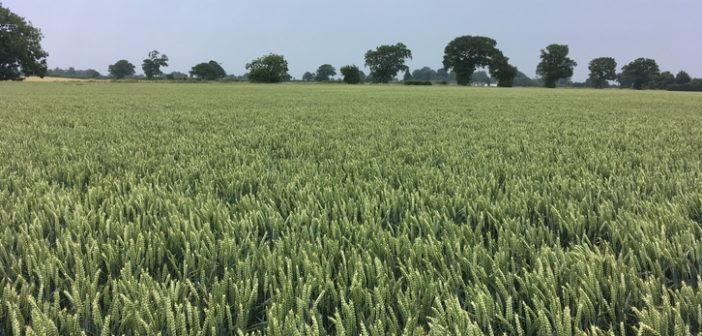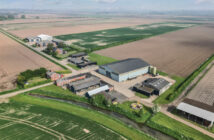With fine spring weather the workload on farms has picked up and growers are in the midst of applying the T0 sprays to their winter wheat crops, which are full of potential and, in some cases, also full of Septoria. Here BASF Agronomy managers give a roundup of the winter wheat in their areas.
In the west, Robin Rose said, “The forward, early drilled crops are frothy, because plants have just grown and grown. In terms of plant growth regulators (PGR), just do what you normally do with the PGR but keep the programme to 21 days. Plan to put two doses of PGR on and if need be, maybe three but you need to get the early ones on. At GS 30, growers can apply 0.3-0.4l/ha Canopy (prohexadione-calcium + mepiquat chloride) or 0.3l/ha Medax Max (prohexadione +trinexapac ethyl).
We have lots more Septoria than we have seen for many a year and a lot more mildew, there has been no hard winter to curb the lush growth and it has allowed disease to go mad. Most people will be targeting both of those with their T0, basing it around chlorothalonil and a specific mildewicide.”
Septoria is readily found throughout the country and, in East Anglia, Matthew Keane said, “Septoria is there on the lower leaves, the amount varies between varieties. The weather is the unknown variable; who knows what the weather is going to do between now and the T1 timing. If it is wet there is enough Septoria there for it to spread up through the plant.
Crops have to be assessed for the T0 application on a field by field basis as it is very very easy to go too early, leaving the crop very open from here to T1. Growers want to keep the gap as short as possible, not more than three weeks, but equally do as much as they can by dampening down disease at T0. Growers are aiming for leaf 3 emergence with T1 but if you have gone too early at T0 it completely runs out of steam and the effect of it is lost before T1. It’s almost working backwards from when the T1 is likely to be, which in this area will be around the 21st-28th April whilst also bearing in mind when you drilled the crop and what variety it is.”
Further north, in Yorkshire, some growers have done the T0 spray quite early and Rory Galloway said, “It will be very important to watch that the interval between T0 and T1 isn’t extended too much.”
Prior to T1, check to see what diseases are there, Andrew Clune said, “In the south it will predominantly be Septoria and there might be a bit of Yellow rust and Brown rust. An Adexar and chlorothalonil mix is a good robust choice at T1 because Adexar doesn’t just target Septoria; it also does Yellow rust and Brown rust.”
He added, “In my area there are a lot of chalk series soils which can be deficient in Magnesium so growers carefully monitor for deficiencies with a growing number of them using tissue testing.”
Dr Sarah Kendall, ADAS Senior Research Scientist said, “Some of the conclusions from the ADAS Yield Enhancement Network (YEN ) have been about the importance of attention to detail ; monitoring and measuring your crop and looking at how it progresses throughout the season.
This year YEN is facilitating the offer of leaf tissue testing by YARA at Lancrop Laboratories to entrants. This will provide some understanding of the nutrient profile of their crop through the season. This data will feed into the YEN database, along with the nutrient content of the grain and agronomy information to help build understanding.
If tissue testing results show a deficiency then it is good to appreciate that this represents a snap shot of the crop, and to follow that up with a soil analysis after harvest. Detecting deficiency symptoms can be complicated, and easily confused. If a deficiency is suspected, then considering the crop type, soil risk factors and results from soil and tissue tests in combination is a useful way of looking at it. Depending on the time of diagnosis, an application of foliar feeds can help, but may be too late if symptoms are already present.
Because of the name, micronutrient, it is often thought that these nutrients are less important than major nutrients. However, they are called micronutrients because the plant only needs a small amount. They are essential for plant growth and development so where there is a deficiency this can be problematic. In terms of yield, it is important that the plant does have access to the right amount of each micronutrient.”




